Key takeaways
- El Cucuy serves as both a cultural warning and a protector, reflecting collective human anxieties through folklore.
- Paranormal infotainment blends storytelling and investigation, requiring skepticism and openness to engage with both fact and legend.
- The emotional impact of firsthand accounts can be as significant as empirical evidence, revealing deeper truths about fear and belief.
- Sharing these stories fosters connection and curiosity, emphasizing the importance of human experience in understanding legends.
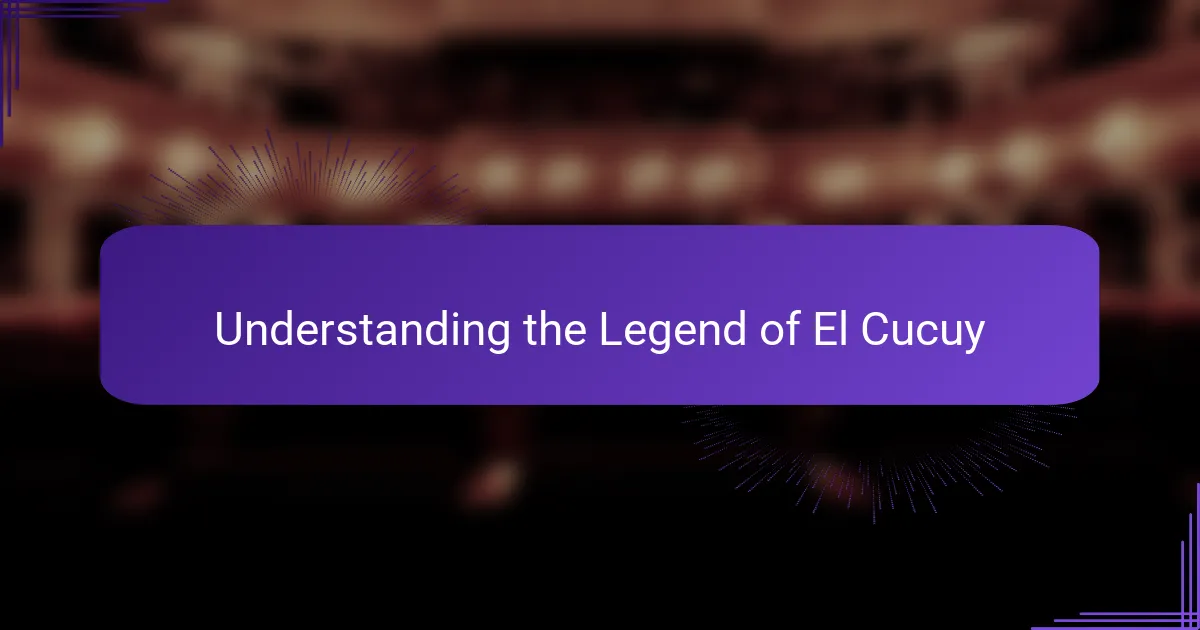
Understanding the Legend of El Cucuy
The legend of El Cucuy has always fascinated me because it feels deeply rooted in cultural fears and warnings. I remember hearing stories as a child, where El Cucuy was this shadowy figure meant to scare kids into behaving — but what if there was more to it than just a bedtime scare? It made me wonder: how much of this myth is born from universal childhood fears versus actual encounters passed down through generations?
What struck me most while delving into the legend is its dual nature—as both protector and punisher. Is El Cucuy simply a cautionary tale, or does it serve a deeper psychological purpose, like embodying the unknown dangers lurking in the dark? Exploring that duality gave me a new appreciation for how folklore can reflect collective human anxieties in such a vivid way.
Understanding El Cucuy means appreciating its role within communities, where the fear it inspires is real, even if the creature itself might not be. I often ask myself, how do these stories shape behavior and belief, especially when shared across families? This realization made the legend come alive for me, beyond just a ghost story, revealing its power to influence and connect people through shared experience.

Exploring Paranormal Infotainment Basics
When I first stepped into the world of paranormal infotainment, I was struck by how it blends storytelling with investigation. It’s not just about spooky tales; it’s about piecing together folklore, eyewitness accounts, and sometimes even scientific curiosity. Have you ever wondered why we’re so drawn to these stories, even when we know they might be exaggerated?
What really grabbed me was how paranormal infotainment often walks the line between fact and legend. From my experience, it requires a healthy dose of skepticism paired with an open mind. How do you separate a genuine mystery from a tall tale? That’s the challenge—and the thrill—of exploring this genre.
In the end, paranormal infotainment feels like a shared journey. When I watch or read about these investigations, I’m not just consuming content; I’m participating in a collective search for answers that might never be fully explained. Isn’t that what makes it so addictively fascinating?
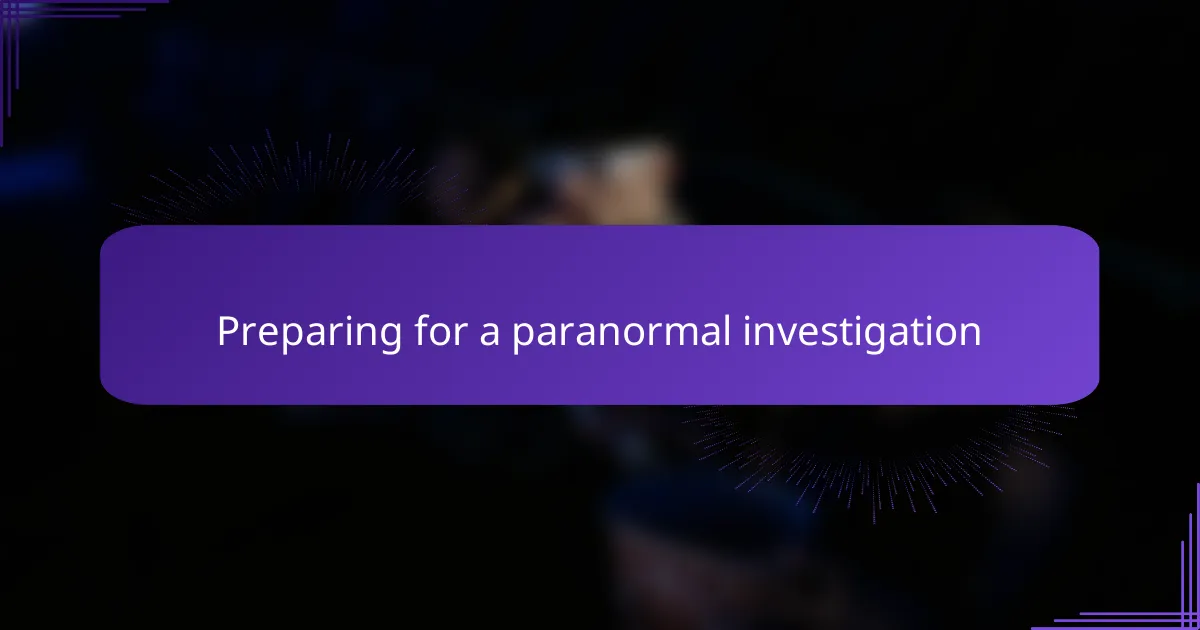
Preparing for a Paranormal Investigation
Preparing for a paranormal investigation means more than just grabbing gear; it’s about setting the right mindset. I remember standing in my living room, going over my checklist and feeling a mix of excitement and nerves—because you never know what might happen once you step into the unknown. Have you ever felt that rush before doing something a little out of your comfort zone?
I found that assembling the right tools—like EMF meters, recorders, and flashlights—is essential, but equally important is knowing how to use them properly. It wasn’t until I practiced asking clear, respectful questions into the dark that I realized communication isn’t just about gadgets, but about patience and intent.
Lastly, I always make space for mental preparation. I ask myself: Am I ready to stay calm if things get intense or if nothing happens at all? That balance between anticipation and groundedness makes the investigation not just productive, but also personally meaningful.
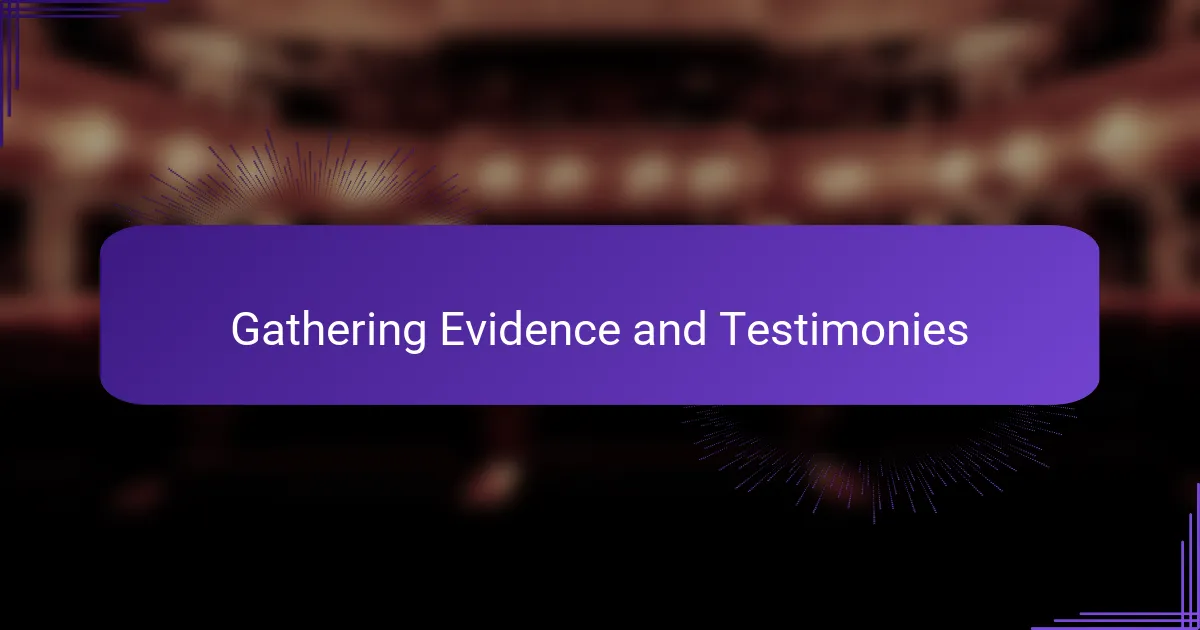
Gathering Evidence and Testimonies
The first step in gathering evidence was reaching out to those who had claimed encounters with El Cucuy. I remember feeling a mix of curiosity and nervousness as I met with people willing to share their stories—some whispered in hushed tones, others spoke with genuine fear still lingering in their eyes. Have you ever noticed how a firsthand account is so much more compelling than a retold legend? Those testimonies brought the legend to life for me in a way no book ever could.
Collecting physical evidence was trickier than I anticipated. While audio recorders and night-vision cameras were ready, the real challenge lay in interpreting what we captured—was that faint whisper really something supernatural or just the wind? I learned that patience is key here; sometimes the most valuable clues are the subtle pauses between sounds or the uneasy chills people report, not just clear-cut proof.
Throughout this process, I often asked myself: how do you weigh a person’s fear against objective facts? It became clear that genuine belief and emotional impact hold their own kind of truth, even when empirical evidence is scarce. Listening carefully, respecting the emotions behind each testimony, made me realize that documenting El Cucuy’s legend isn’t only about finding hard proof—it’s about preserving the human experience woven into that mystery.
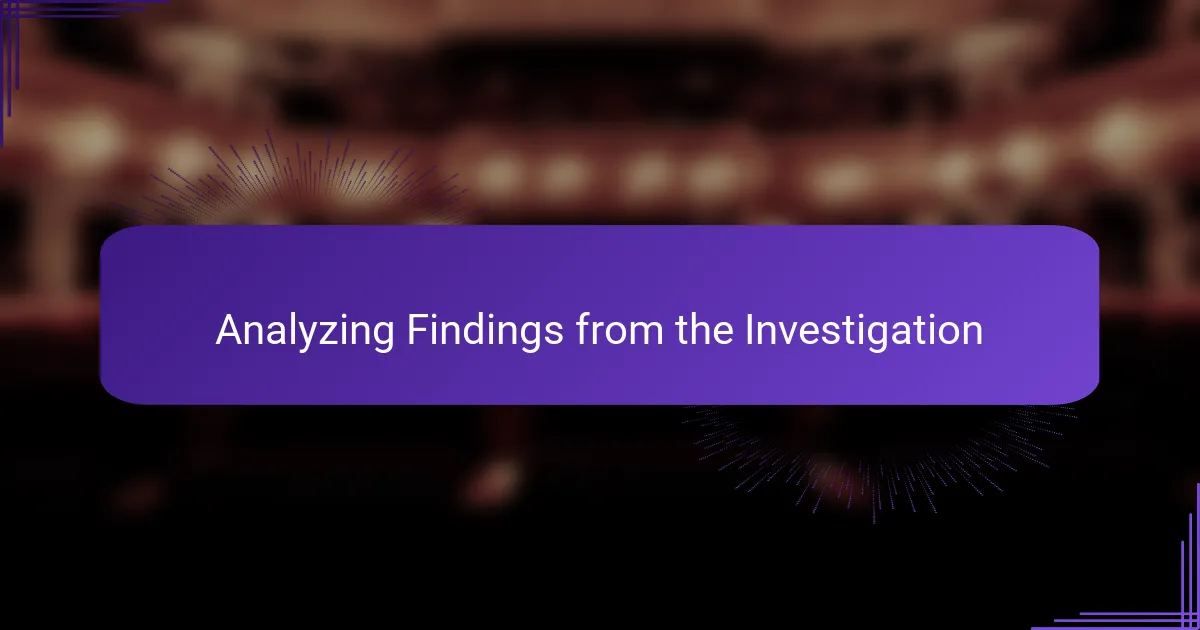
Analyzing Findings from the Investigation
Reviewing all the evidence I gathered, I noticed a fascinating pattern: the more terrified the witness, the clearer and more vivid their stories became. It made me wonder—how much does fear shape what we perceive? From my experience, emotions can be as powerful as facts when it comes to understanding paranormal claims.
Analyzing audio recordings and environmental data was a mixed bag. Several moments that felt charged with energy coincided with natural phenomena, like shifting shadows or creaking floors. Could our minds be filling in gaps where actual supernatural signals don’t exist? I found myself constantly balancing between skepticism and belief, which is exactly what investigating El Cucuy demands.
One personal insight struck me hardest—sometimes, the legend’s power lies not in proving its existence but in the impact it has on communities. After sorting through all the findings, I realized the real mystery might be how deeply these stories resonate in human hearts, connecting generations through shared fear and wonder. Isn’t that, in the end, what makes the legend so enduring?
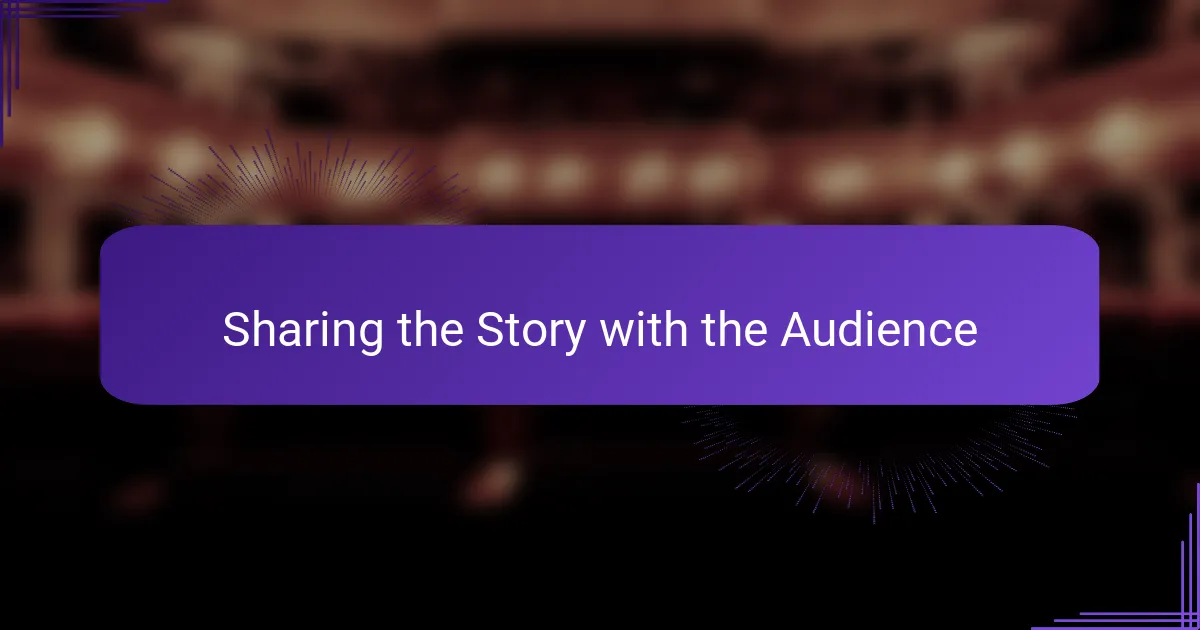
Sharing the Story with the Audience
Sharing the story with the audience felt like a responsibility I hadn’t fully anticipated. I wanted to honor every person’s experience while inviting listeners to reflect on their own fears and beliefs. How often do we dismiss these tales as mere superstition, without realizing the deeper human truths they reveal?
When I finally presented the investigation, I chose to weave together facts, emotions, and cultural context—because the legend isn’t just about eerie sightings but about shared humanity. I found that people connect most when the story feels genuine and relatable, not just like a cold report of “evidence.” Have you ever noticed how a well-told story can pull you in more than raw data ever could?
At times, I hesitated—wondering if my words could do justice to the complexity of El Cucuy’s legend. But then I reminded myself that storytelling is about opening a door, not closing the case. Sharing these stories invites curiosity and conversation, and maybe that’s where the real magic lies.
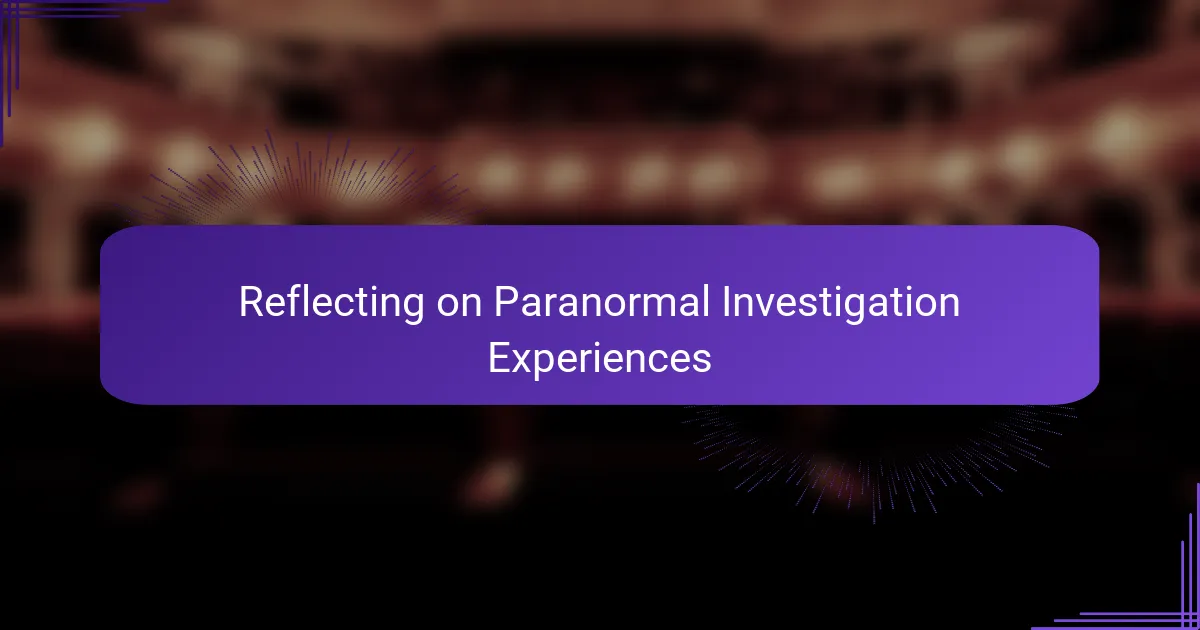
Reflecting on Paranormal Investigation Experiences
Looking back on my time investigating El Cucuy, I realize how much these experiences challenged my perceptions. Each moment in the dark, whether filled with eerie silence or unexplained noises, pushed me to confront my own fears and biases. Have you ever felt that tension between wanting answers and fearing what those answers might be? That’s a feeling I became intimately familiar with.
Sometimes the most profound insights didn’t come from the evidence itself but from the emotions and reactions of the people involved. Hearing their stories, I sensed a mix of vulnerability and strength that added layers to the legend. It made me question: what does it really mean to “investigate” something so deeply intertwined with human belief and folklore?
In the end, reflection became as important as the investigation. I often found myself pondering not just what I found—or didn’t find—but how the whole journey reshaped my understanding of fear, mystery, and the stories we tell ourselves. Isn’t that the true heart of any paranormal experience?